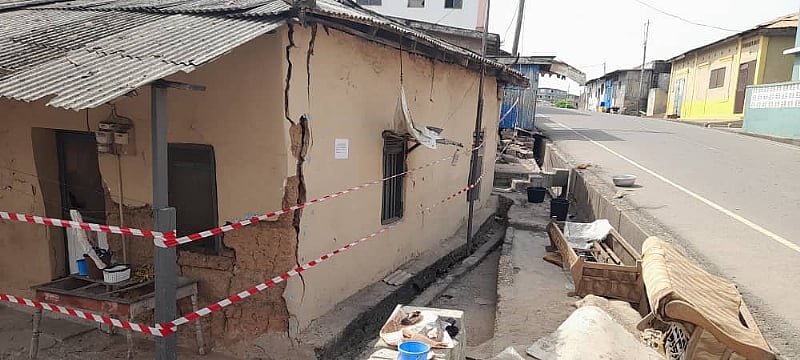The Sekondi-Takoradi Metropolis in Ghana faces a looming crisis as 95 buildings have been deemed unsafe and slated for demolition by the National Disaster Management Organisation (NADMO). These structures, scattered across Essikado-Ketan (56), Sekondi (21), and Takoradi (18), pose a significant threat to inhabitants and surrounding communities due to their compromised structural integrity. The precarious state of these buildings presents a constant risk of collapse, potentially leading to injuries, fatalities, and widespread property damage. The identification of these hazardous structures underscores the urgent need for action to mitigate the potential for disaster and safeguard the lives of residents. The situation highlights the complex challenges faced by authorities in balancing safety concerns with socio-cultural sensitivities and individual property rights, particularly when dealing with inherited properties.
The primary obstacle to demolition stems from the deeply ingrained beliefs of some property owners, particularly regarding inherited structures. These beliefs often prevent owners from acknowledging the severity of the risk and consenting to demolition. This cultural reverence for ancestral properties complicates NADMO’s efforts to enforce safety regulations and protect the community from potential harm. The reluctance to demolish these buildings, despite their deteriorating condition, reflects the intricate relationship between cultural heritage, personal attachment, and the practical necessity of ensuring public safety. This cultural sensitivity underscores the need for a nuanced approach that respects tradition while prioritizing the safety and well-being of all residents.
The legal and logistical complexities of the demolition process further compound the challenge. Serving notices to absentee landlords and obtaining court orders for demolition are time-consuming procedures, adding layers of bureaucracy to an already sensitive issue. The added financial burden of demolition costs falling on the property owners adds another layer of resistance, making it difficult to enforce the necessary safety measures. This confluence of legal, financial, and cultural factors contributes to the slow progress in addressing the hazardous buildings, increasing the risk of a potential catastrophe.
The tragic consequences of ignoring unsafe structures are not hypothetical. In July 2019, a mud house collapse in Ngyiresia, a suburb of Essikado, claimed the lives of five people during a heavy downpour. This incident, directly attributed to structural failure exacerbated by the rain, serves as a stark reminder of the potential for devastation when unsafe buildings are left unaddressed. This past tragedy underscores the urgency of the current situation and highlights the critical need for swift action to prevent further loss of life and property.
NADMO’s proactive approach in identifying and marking these hazardous structures is a crucial step in mitigating the risks. However, the organization must navigate the delicate balance between enforcing safety regulations and respecting cultural sensitivities. Effective communication, community engagement, and culturally sensitive strategies are essential in persuading property owners to comply with demolition orders. Finding solutions that address both safety concerns and the preservation of cultural heritage will be paramount in achieving a successful outcome.
Moving forward, a collaborative approach involving NADMO, local authorities, community leaders, and property owners is vital. Open dialogue, public awareness campaigns, and financial assistance programs could help overcome resistance and facilitate the demolition process. By working together, stakeholders can create a safer environment for all residents while respecting cultural traditions and minimizing the financial burden on property owners. This collective effort will be instrumental in preventing further tragedies and ensuring the long-term safety and well-being of the Sekondi-Takoradi Metropolis.


